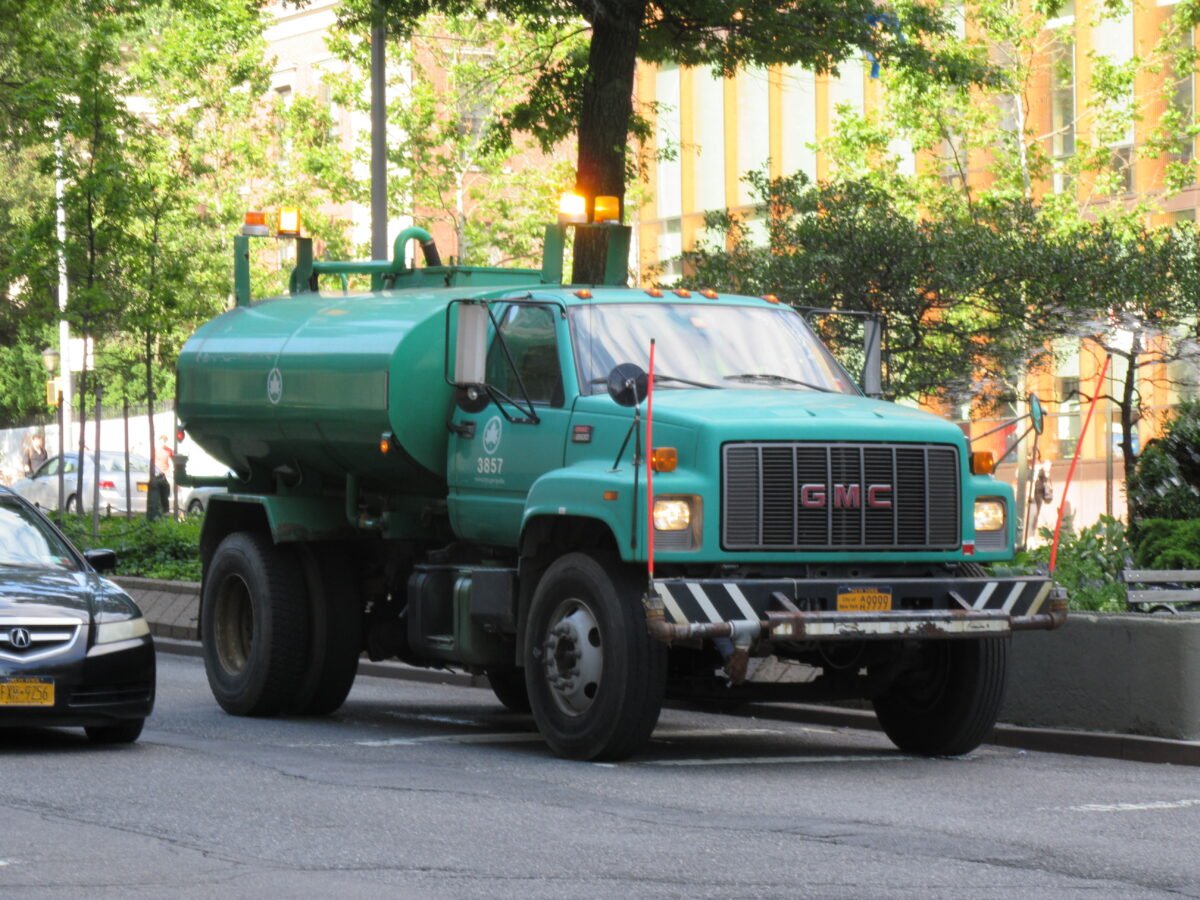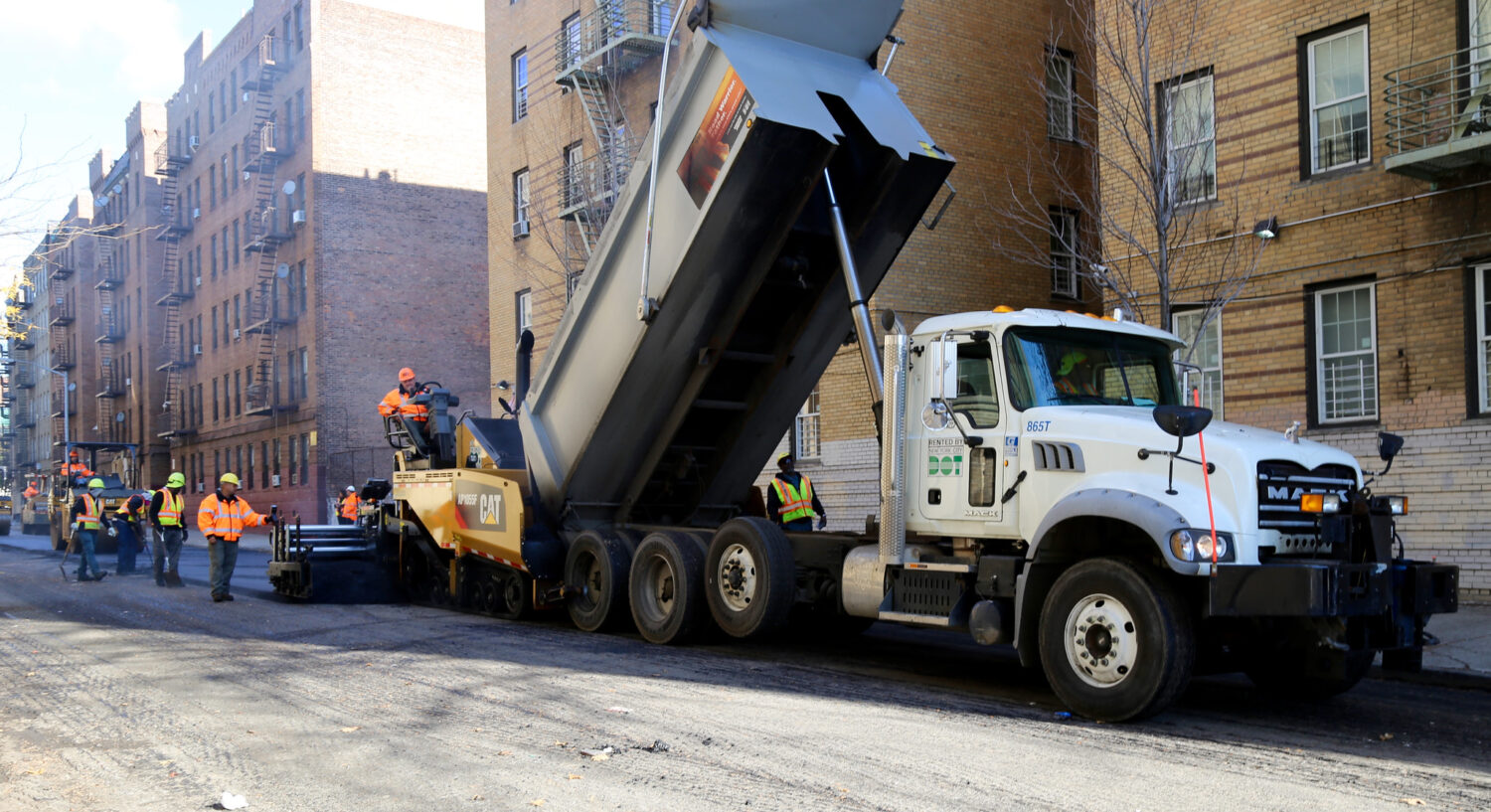California is rarely outshined as the leader when it comes to transportation electrification. However, the New York City Council is considering a bill that would codify a path toward a 100 percent zero-emission municipal fleet. This proposal would require the city’s entire on-road fleet, including heavy-duty trucks and specialty vehicles, to transition to zero-emission vehicles (ZEVs) by mid-2035.
The bill currently enjoys significant tailwinds with a supermajority of council members not only signaling support but co-sponsoring the bill (37 of 51 members to be exact). If enacted, Mayor Eric Adams and the City Council would not only surpass former Mayor De Blasio’s goal of an all-electric city fleet by 2040, but also make New York City the first major jurisdiction in the U.S. to adopt such a requirement.
As of February 2023, six states, including New York State, have passed California’s Advanced Clean Trucks rule, which requires manufacturers to sell an increasing percentage of zero-emission trucks and buses in those states. While this regulation is poised to accelerate the sales of zero-emission trucks after it begins in 2024, no regulation to date requires the transition of in-use trucks to ZEVs. California will consider adopting such a proposal, known as the Advanced Clean Fleets (ACF) rule, in late-April, but if New York City (NYC) adopts its bill before, it would make them the first to take this vital step.
Thus, the race for clean fleets is on, and not a moment too late.

An electric municipal fleet for a healthier New York City
Each year, fine particulate pollution from vehicles on NYC’s roads is responsible for an estimated 260 premature deaths and 720 emergency room visits. Around 65 percent of these lives lost can be attributed to fine particulate emissions from trucks and buses, despite those vehicles accounting for just six percent of annual vehicle miles traveled on city streets. Freight and port-adjacent communities bear the brunt of exposure and, according to New York City Department of Health research, people living in the city’s poorest neighborhoods experience over 8 times the number of emergency room visits from vehicle pollution compared to more affluent neighborhoods.
To be clear, the NYC bill would apply to its fleet of around 30,000 municipal vehicles, while California’s ACF would cover 139,000 municipal and state-owned medium- and heavy-duty vehicles in the state (as well as around 30,000 drayage trucks and 350,000 commercial trucks and buses). Even so, NYC’s proposal is meaningful: it has the nation’s largest municipal vehicle fleet and could transition its heavy-duty truck fleet to ZEVs at least four and one-half years faster than ACF’s municipal fleet requirements (assuming California municipal trucks’ useful life is similar to that of the legal minimum for commercial trucks).
The municipal electrification bill offers an opportunity for the city to establish itself as a leader in on-road electrification and influence other major American cities to follow suit, accelerating the adoption of zero-emission medium- and heavy-duty vehicles. New York City lags behind other major cities in both electric vehicle (EV) uptake and charging infrastructure deployment. In 2021, 3.4 percent of new car sales in NYC were battery-electric and plug-in hybrid vehicles. For comparison, the national average that year was 4.4 percent, and 22 percent in San Francisco. The disparity in public charging infrastructure suggests a lack of access to charging may be holding some would-be EV drivers from going electric because charging infrastructure typically needs to precede adoption. Currently, New York City has around 350 public charging stations – roughly 15 percent less than San Francisco despite having about 10 times the population. Transitioning its large municipal fleet to ZEVs will require significant EV charging infrastructure investments, which could be accompanied by supporting grid upgrades. This will better prepare the city to accelerate the installation of chargers for residential and commercial vehicles.

NYC’s opportunity to leapfrog and lead
Although NYC is by no means a car-centric city when compared to the rest of the United States, the story of the impacts is still the same: vehicles burning fossil fuels are a primary source of harmful pollution, and heavy-duty vehicles are disproportionately responsible. Many of the 26,000 vehicles city agencies operate daily are diesel-powered trucks and specialty vehicles, including fire trucks, street sweepers, trash collectors, and construction vehicles. The city has made some progress towards a cleaner fleet, but many of these vehicles are plug-in hybrids, which still produce harmful pollution. Furthermore, a recent study of light-duty plug-in hybrid vehicles suggested their emissions are much higher than previously estimated. This bill would require the city to deploy fully zero-emission vehicles in most cases.
There’s an international angle here too. At COP27, the White House announced the Zero-Emission Government Fleet Declaration, which sets a goal of 100 percent ZEV acquisitions for federal truck fleets by 2035. If the NYC bill passes, it provides the U.S. an opportunity to lead by example: our largest city not only exceeded the agreement’s acquisition goals, but committed to converting its entire fleet by mid-2035.
In NYC and beyond, the need and the path for municipal fleet electrification are apparent. Mayor Adams and the City Council should follow the footsteps of the fast-paced walkers on their sidewalks and seize the opportunity to up the tempo, and provide a meaningful example while doing so.

